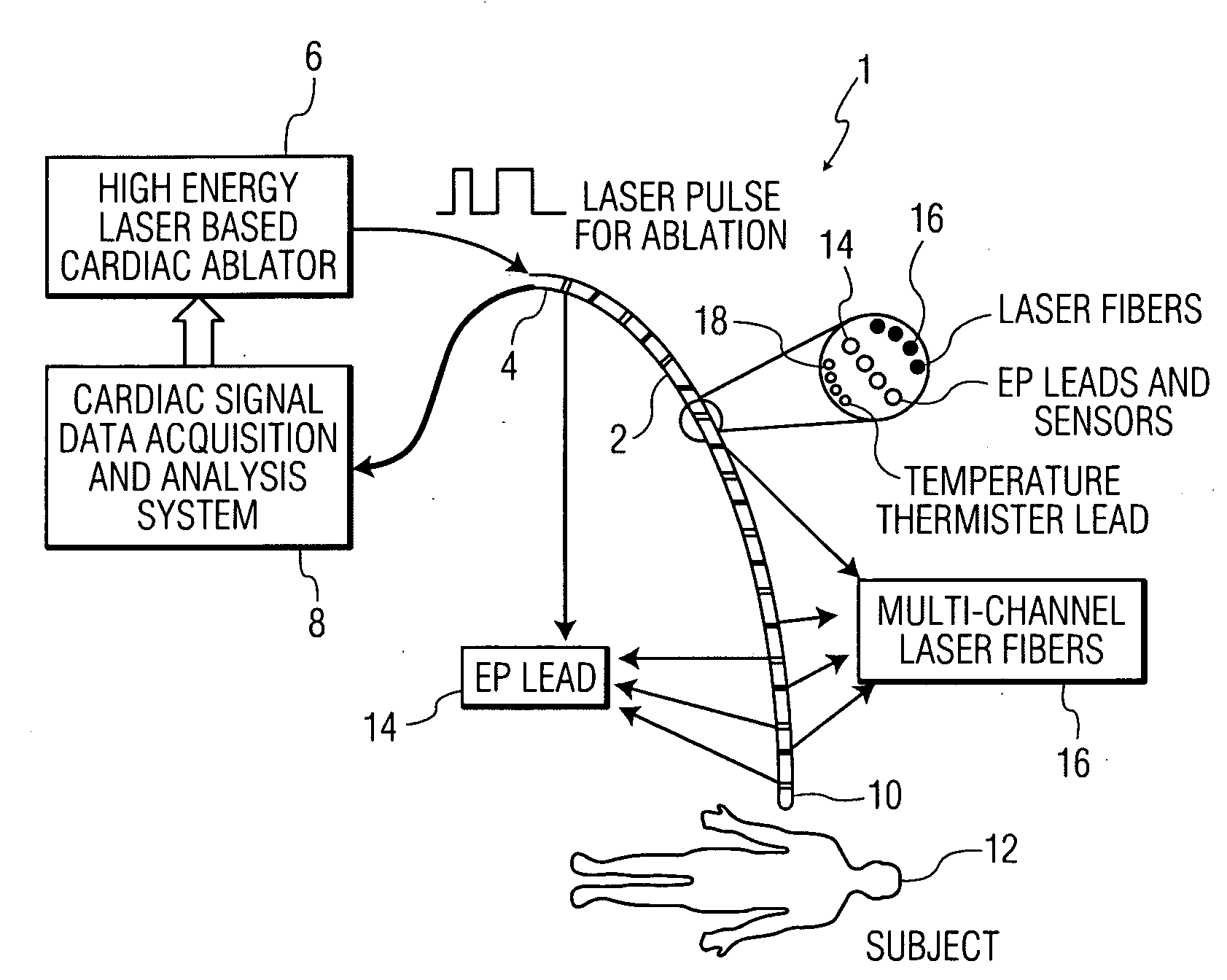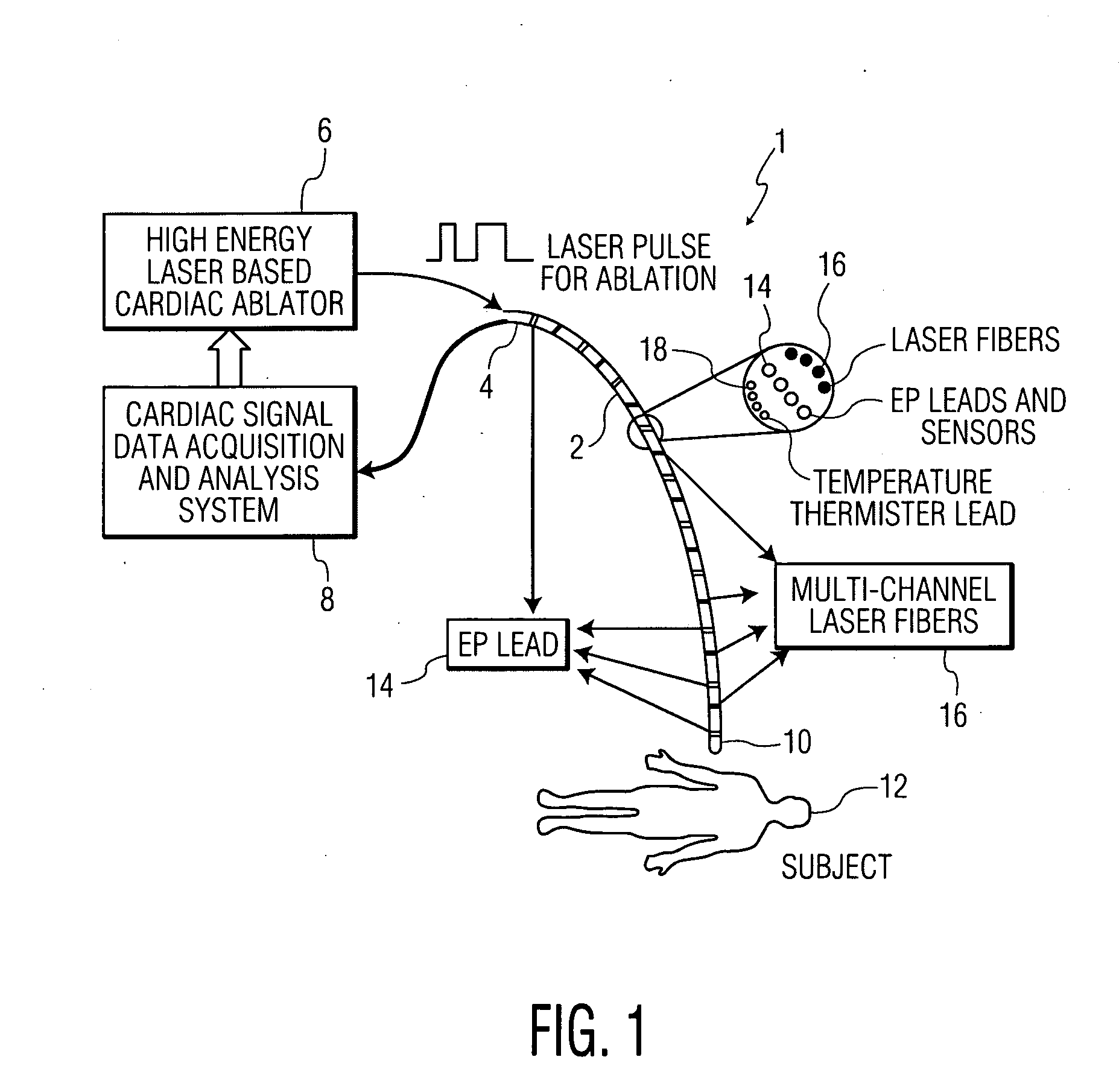Ep signal mapping-based optical ablation for patient monitoring and medical applications
a technology of optical ablation and ep signal mapping, applied in the field of systems and methods for cardiac ablation, can solve the problems of unavoidably increasing the potential risk to heart tissue and circulation system, no single catheter available for integration, and difficult or impossible to accurately and accurately capture data, etc., to achieve efficient and reliable, better precision
- Summary
- Abstract
- Description
- Claims
- Application Information
AI Technical Summary
Benefits of technology
Problems solved by technology
Method used
Image
Examples
Embodiment Construction
[0021]Monitoring of cardiac tissue and electrophysiological activities using an EP catheter are important steps in the diagnosis and pathology characterization of a patient's heart. For cardiac tissue treatment, however, additional medical devices are needed. One such additional medical device is an ablation catheter, which can be used to destroy pathological conduction tissue of the heart to return the heart to a healthy rhythm and / or to prevent an unhealthy heart rhythm. The present disclosure provides a new device and technique which integrates into a single catheter the functions of an EP catheter and an optical ablation catheter. This combined catheter may greatly improve the reliability and accuracy of the medical diagnosis and treatment of heart arrhythmias and malfunctioning tissue.
[0022]1. EP Catheter and Optical Ablation Integration
[0023]The disclosed EP catheter system integrates EP signal sensing / recording and optical (laser) ablation in a single cathether. The EP signal...
PUM
 Login to View More
Login to View More Abstract
Description
Claims
Application Information
 Login to View More
Login to View More - R&D
- Intellectual Property
- Life Sciences
- Materials
- Tech Scout
- Unparalleled Data Quality
- Higher Quality Content
- 60% Fewer Hallucinations
Browse by: Latest US Patents, China's latest patents, Technical Efficacy Thesaurus, Application Domain, Technology Topic, Popular Technical Reports.
© 2025 PatSnap. All rights reserved.Legal|Privacy policy|Modern Slavery Act Transparency Statement|Sitemap|About US| Contact US: help@patsnap.com



